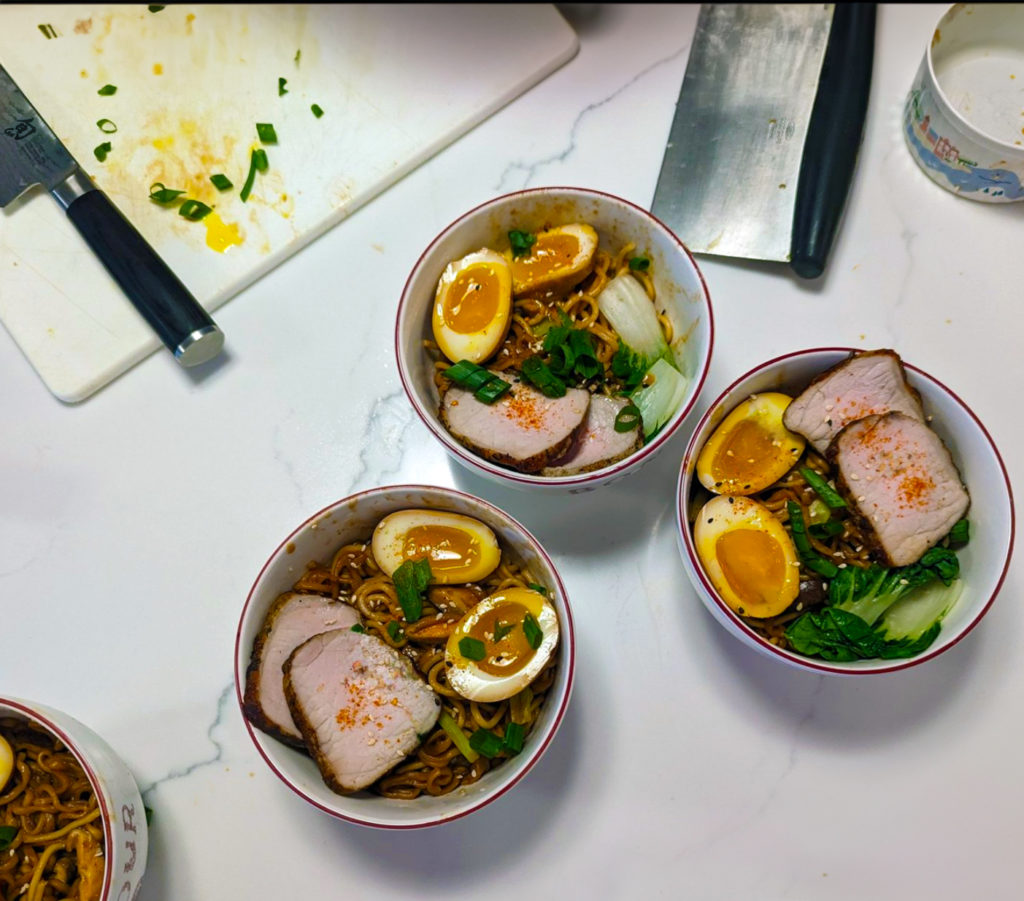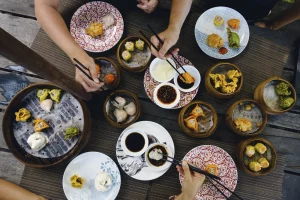
Spicy Garlic Cabbage and Vegetable Stir Fry: A Flavorful & Healthy Delight
Are you in search of a delightful and palate-pleasing stir-fry that is bursting with flavors? Look no further! Today, I’m excited to share with you a fantastic recipe that will tickle your taste buds and make your dinner table a feast of colors and aromas. Introducing the Spicy Garlic Cabbage and Vegetable Stir Fry. This is absolutely one of the best dishes I’ve ever made and it rivals anything you would get in a restaurant!
This stir fry is not just an explosion of taste but also a healthy and nutritious meal option. It is packed with an array of vibrant vegetables (and you can use and substitute whatever you have in the frig) that not only adds a burst of color to your plate but also provides essential vitamins, minerals and dietary fibers. The star of the show is the Napa cabbage (although you can substitute any type of cabbage you have on hand). Its delicate texture and mild, slightly sweet flavor make it an excellent base for absorbing the delectable sauce.
Speaking of sauce, the secret to this stir fry’s tantalizing taste lies in the well-balanced blend of spices and savory ingredients. The combination of hoisin sauce, light soy sauce, dark soy sauce, rice vinegar, brown sugar, sesame oil, and the spicy kick of chili garlic oil (I love Lao Gan Ma Spicy Chili Crisp for this) creates a symphony of flavors that will leave your taste buds craving more.
This Spicy Garlic Cabbage and Vegetable Stir Fry also allows for some customization, making it a versatile dish for your family and friends. If you want to amp up the protein content, feel free to add cooked chicken, pork, or shrimp to the mix. You can also throw in some bok choy to add another layer of texture and taste to the dish.
The best part about this stir fry is how quick and easy it is to make. In just 30 minutes, you’ll have a satisfying and wholesome meal ready to serve. Whether you’re a seasoned cook or a kitchen novice, this recipe is straightforward to follow, ensuring your success in the kitchen.
In addition to being incredibly delicious and a breeze to make, this stir fry proves to be a brilliant tactic to win over even the pickiest eaters, enticing them to relish a variety of nutritious vegetables. The combination of the savory sauce and perfectly cooked vegetables might just convert even the most stubborn vegetable skeptic into a fan.
So, the next time you find yourself craving a flavorful and nutritious meal that’s a cinch to prepare, remember the Spicy Garlic Cabbage and Vegetable Stir Fry. It’s a recipe that not only delights the senses but also brings joy to the dinner table as everyone relishes the incredible taste of this colorful stir fry. Enjoy!
Btw, everything you need for any of my Asian recipes (like my Soy-Marinated Eggs, Pork Loin, Bok Choy and Shiitake Mushrooms), is available at Weee!, the best online source for all Asian ingredients. (Use this link to get $20 off your first two orders). They deliver in a day or two (and FREE delivery with a minimum purchase), and their prices are better than what you’ll find on Amazon or in brick-and-mortar stores.

Spicy Garlic Cabbage and Vegetable Stir Fry
This quick and easy stir fry is a colorful blend of Napa cabbage, snap peas, carrots, and more, perfectly coated in a savory, spicy sauce. A healthy and satisfying meal for any occasion!
Ingredients
Ingredients
- 1 tablespoon vegetable oil
- 4 cloves garlic minced
- 2 teaspoons ginger minced
- 3 green onions sliced thin with whites and green parts separated
- 4 cups shredded Napa cabbage any cabbage can be substituted
- 1 carrot grated or julienned
- 1 cup sugar snap peas
- 1 cup broccoli florets with their thinly sliced stalks
- 1 package Mi Goreng Hot & Spicy Instant Noodles with the seasoning packets see note
Sauce
- 3 tablespoons hoisin sauce plus additional for serving
- 1 tablespoon light soy sauce
- ½ tablespoon dark soy sauce
- 1 ½ teaspoons rice vinegar
- 1 teaspoon brown sugar
- ½ teaspoon sesame oil
- ½-1½ teaspoon Spicy chili crisp oil (Lao Gan Ma Spicy Chili Crisp Sauce is a great brand) to taste
Instructions
-
Combine the sauce ingredients in a small bowl and set aside.
-
Cook the noodles according to the package directions. Drain, reserving ⅓ cup of the cooking water. Add the seasoning packets to the noodles, stir and set aside.
-
Heat the vegetable oil in a large wok over medium heat. Add garlic, ginger and the whites of the green onions. Stir fry until fragrant., about 1-2 minutes.
-
Turn the heat up to high, add the cabbage, sugar snap peas and carrots and stir fry until slightly tender, about 3-4 minutes.
-
Add the sauce, noodles and 2 tablespoons of the reserved cooking water (or more as needed). Toss and stir while cooking until everything is combined and the cabbage is tender, about 4-5 minutes.
-
Remove from heat and garnish with the remaining green onion and sesame seeds. Drizzle with more Chili oil, additional hoisin or teriyaki sauce if desired.
Recipe Notes
• You can substitute most any ramen, but discard the seasoning packet
• Cooked chicken, pork or shrimp can be added.
• Bok Choy is also an excellent addition to this dish








